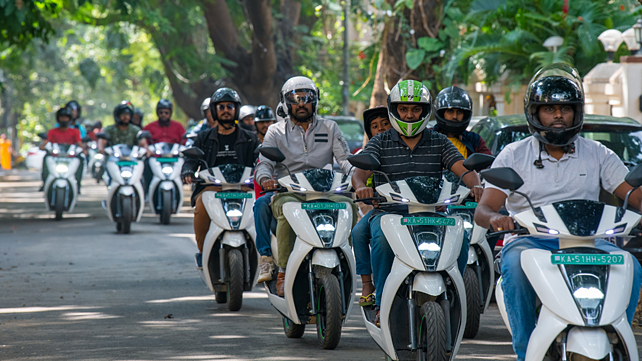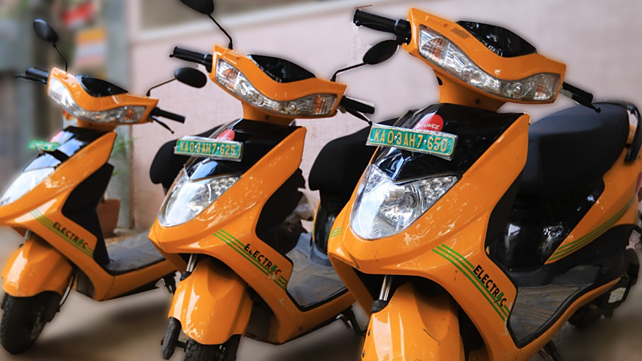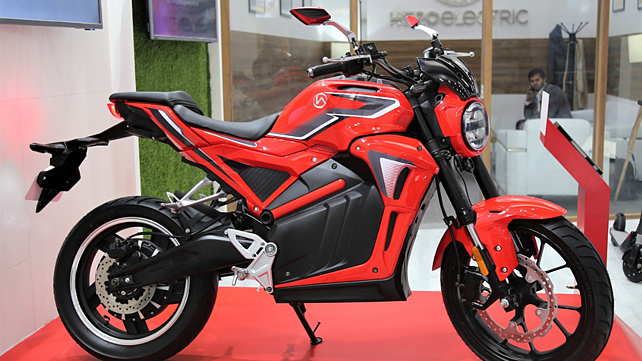
Electric two-wheeler (E2W) segment to see a hockey-stick growth in the next three to five years as the top manufacturers of these vehicles are preparing to expand their production up to five million units annually with a total investment of INR 4,280 crore.
Four out five top E2W which Mobility Outlook spoke to unanimously agreed that in the next three to five years, the segment will see a rising tide of demand on the back of new products, better awareness, willingness to change, rise in petrol prices, falling battery prices and government incentives on the purchase of electric vehicles.
Experts tracking the industry also indicate that E2W has a relatively lower dependency on commercial charging infrastructure (owing to the limited span of commute) and can also adopt battery swapping or home charging, which will further enhance the segment’s growth. ICRA predicts that E2W will command over 8-10% of the new vehicle sales by 2025.
| E2W Company | Current Capacity (Lakhs) | Expected Capacity (Lakhs) | Timeline | Projected Investment (INR/Cr) |
| Hero Electric | 0.75 | 10 | 2025 | 700 |
| Okinawa | 0.90 | 5 | 2024 | 350 |
| Apmere Vehicles | 1 | 10 | 2030 | 700 |
| Ola Electric | NA | 20 | NA | 2400 |
| Ather | 0.40 | 5 | 2023 | 130 |
As per GfK Automotive Syndicated Monitor 2020 Study, “More than 70% of urban Indian consumers said they are interested in all form of alternative fuel engines including all Electric Vehicles (EVs), Plug-in Hybrid Electric Vehicles (PHEVs), Hybrid Electric Vehicle (HEVs) and Fuel-cell Electric Vehicles (FCEVs).
“Low operating costs of EVs and soaring fuel prices motivate buyers to consider more fuel-efficient alternatives. The increasing levels of awareness on EV technology among young consumers is likely to accelerate the growth and adoption of EVs across product segments,” said Anant Jain, Head of Market Intelligence – India, GfK.
Naveen Munjal, Managing Director, Hero Electric and President of SMEV told Mobility Outlook that he is anticipating E2W to be 20% of the total two-wheeler based on the company’s research and methodology volumes in India by 2026. Based on today’s figures it will be around 4-4.5 million units. This number can be further increased if the financing becomes more liberal and demand rises in business to business (B2B) space.
Hero Electric has announced that it will invest a sum of INR 700 crore in ramping up production. It is currently expanding its Ludhiana facility and planning to hire more workers and invest in automation to increase the products. By the end of next year, it aims to touch an annual capacity of 300,000 units from the current capacity of 75,000 units. The company is also scouting for a new plant near the coastal region to cater to international markets.
Similarly, the second-largest E2W segment, Okinawa Autotech, will pour INR 350 crore to set up a new facility in Bhiwadi near the existing facility to touch the annual capacity of five lakh units. At present, the company’s old facility in Bhiwadi, Rajasthan, can manufacture 180,000 units annually.
Greaves Cotton-owned Ampere Vehicles is readying its new plant at Ranipet with an investment of INR 700 crore spread across ten years. The plant will have a capacity to scale production up to one million units. However, the company aims to produce 100,000 units in the first year of its operations. According to the company, the plant will be operational by the end of this year.

Seeing the rising business opportunity in E2W, ride-hailing company Ola is strengthening its leadership team under Ola electric mobility. It will invest INR 2,400 crore to set up the largest E2W manufacturing facility in Tamil Nadu to manufacture two million units annually in the next ten years.
While the first mover in the premium electric scooters, Ather Energy is also stepping up its operations with a new facility to manufacture half a million E2Ws. After the success of 450 and 450X, the company is also eyeing electric motorcycles to expand its product portfolio further.
Sohinder Gill, Director General, SMEV, said, “Though companies are investing in expanding capacities to achieve these numbers, there will be stagnancy initially as E2W above INR 1.2 Lakh only account for 4-5% of the total E2W sold. These are vehicles that match the performance of ICE. But if any of the players brings down the price to INR 90,000, which replaces a traditional two-wheeler, then, there will be exponential growth in the segment.”
He added, “the first milestone to achieve is to sell 2.5 lakh E2W this year or may be next year, which can only happen with some policy tweak. As FAME-II in current form is not supporting the segment.”
Industry insiders on the condition of anonymity told that the current policies are not supportive of the segment. On the contrary, it has taken the industry in the reverse direction. As FAME-II largely supports low performing scooters and on the other hand, the rise of import duty on batteries increases the vehicle prices. So intervention is required in the current form of policy for electric vehicles.
In terms of the supply chain, many suppliers, start-ups and vendors are thinking to design and produce products in India, but they are not making any serious investments as they are watching the numbers of E2Ws on the ground.
“Though there is a projection by companies of building capacities, the actual orders we are getting doesn’t reflect that projection,” one of the suppliers said on condition of anonymity.

Munjal, on the other hand, said, “If you break the supply chain into three parts - Mechanical, Electrical & Electronic and Drivetrain, there is no issue of mechanical (chassis, wheels, tyres and paint) and electrical & electronic (wire harness, sensors and lighting) as these are already supplied from traditional companies. For Drivetrain, the PLI scheme is targeted to manufacture batteries, but at the same time, import duty on batteries should be reduced to evolve at certain numbers.”
Three E2W manufacturers have set up their shops in Hosur near Chennai and Bengaluru to solve the supply chain puzzle and increase localisation.
In an interview with Mobility Outlook, Nagesh Bhansavali, MD & CEO, Greaves Cotton said that opening a plant at Ranipet was a strategic decision to increase its localisation.
Outlook
The next two-three years are very crucial for the E2W segment as the petrol prices are rising and battery prices are falling. Experts speculate that both ICE two-wheelers and E2W will come at par from TCO - total cost of ownership point of view in the next few years. However, the segment still requires a push from government in the form of subsidies. Industry leaders opine that if FAME-II is tweaked a bit, it can generate a lot of volumes as the price of the E2W will fall, and hence market adoption will take place.